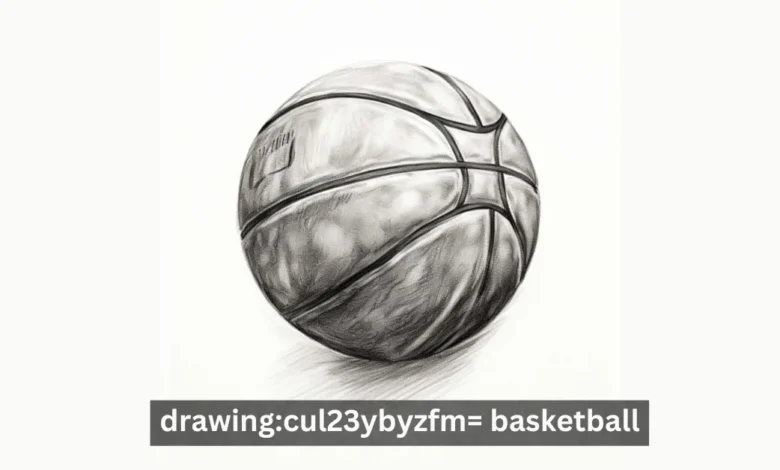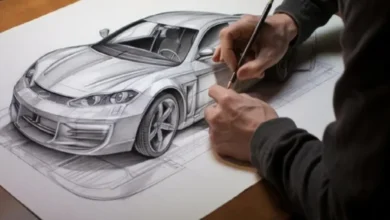Slam Dunk Sketches: A Step-by-Step Guide to drawing:cul23ybyzfm= basketball Scenes

Introduction to Slam Dunk Sketches
Are you ready to take your drawing skills to the next level? If basketball is your passion, then creating Slam Dunk Sketches might just be the perfect way to combine art and sport. Picture this: a player soaring through the air, defying gravity as they head toward the hoop for an epic dunk. Capturing that moment on paper can be both thrilling and rewarding.
Whether you’re a seasoned artist or just starting out, learning how to draw dynamic basketball scenes opens up a world of creativity. From capturing intense action shots to illustrating satisfying slam dunks, there’s so much potential waiting for you with each stroke of your pencil. Grab your sketchbook and let’s dive into this step-by-step guide designed specifically for aspiring artists who want to bring their love of basketball onto the canvas!
Materials needed for drawing:cul23ybyzfm= basketball scenes
To dive into the world of Slam Dunk Sketches, having the right materials is essential. Start with quality drawing paper. A smooth surface allows for clean lines and vibrant sketches.
Next, grab a set of pencils. Varying degrees from 2H to 6B will help you create depth through shading and detail. Don’t forget an eraser—mistakes can be your best learning opportunity.
Incorporate fine-tipped pens or markers for outlining once you’re satisfied with your sketch. They add precision and pop to your artwork.
Consider using colored pencils or watercolors if you want to bring life to your drawings. A splash of color can evoke energy that mirrors the game itself.
Keep reference images on hand—photos of players in action can inspire movement and realism in your work. With these tools at your side, you’re ready to capture basketball’s excitement on paper!
Step 1: Creating a basic sketch of the court
To kick off your Slam Dunk Sketches, start by laying down the foundation: the basketball court. Picture its layout in your mind before putting pencil to paper.
Begin with a rectangle. This represents the outer boundary of the court. Remember, it isn’t just any rectangle; it’s about proportions and perspective. Maintain accuracy for a realistic feel.
Next, outline key sections like the three-point line and free-throw circle. These elements add structure to your drawing while guiding player movements during games.
Don’t forget about adding details like center circles and sidelines as you progress. Keep them light at first; you’ll refine these later on.
Make sure everything is proportionate and spaced correctly, allowing players to fit naturally within this space when added later on. Your court sketch sets the stage for all action that follows—so give it some thoughtful care!
Step 2: Adding the players and their positions
Now it’s time to bring your scene to life by adding players. Start by placing their silhouettes on the court. Think about their positions: are they shooting, dribbling, or defending?
Use simple shapes as a foundation for each player. Circles can represent heads, while rectangles work well for bodies and limbs. This approach allows you to focus first on proportions before refining details.
Consider the dynamics of movement too. A player jumping for a slam dunk should have legs bent and arms raised high in anticipation of that thrilling moment. Capture the energy in those poses.
Don’t forget about spacing between players; it reflects the real game flow. Each athlete’s position tells a story—whether they’re battling opponents or working together as teammates creates an engaging visual narrative!
Step 3: Adding details to the players and their movements
Adding details to the players is where your sketch comes to life. Start with facial expressions. Capture the intensity or joy of the moment, depending on whether they’re shooting or celebrating.
Next, focus on their clothing. Pay attention to how jerseys drape and move during action. Creases and folds add realism; don’t overlook them.
Now shift your gaze to their limbs. Look closely at body angles and positions—how arms stretch upward for a dunk or legs pivot in defense. These subtle nuances convey motion effectively.
Consider also the ball’s position mid-flight or as it leaves a player’s hand. The arc can create energy in your composition.
Props like sneakers hitting the court can emphasize movement too, suggesting speed and agility while grounding your characters within the scene.
Step 4: Incorporating the background elements
When it comes to basketball scenes, the background can set the entire mood. Start by sketching the court boundaries. Make sure your lines are straight and even for a realistic feel.
Next, think about the audience. Adding spectators in the stands brings life to your drawing. Capture their emotions—excitement, anticipation, or even tension as they watch the game unfold.
You could also include scoreboard details for an extra layer of authenticity. A visible score adds context to your scene and engages viewers further.
If you want a dynamic look, consider adding motion blur effects in certain areas like moving players or bouncing balls. This technique creates a sense of energy that’s vital in sports art.
Don’t forget environmental elements such as team banners or advertising boards that fill space without overwhelming focus on player action. These small touches contribute significantly to storytelling within your artwork.
Tips for creating dynamic and realistic drawing:cul23ybyzfm= basketball scenes
To create dynamic and realistic slam dunk sketches, focus on movement. Capture the energy of players in action by using angled lines or exaggerated poses. This adds life to your drawings.
Consider perspective carefully. A low viewpoint can emphasize height during a jump, making the scene more dramatic. Experiment with different angles to find what works best for your vision.
Shadows play an essential role too. Use them to enhance depth and dimension in your drawings. Observing how light interacts with figures will help you achieve a three-dimensional effect.
Don’t forget about facial expressions! They convey emotions that resonate with viewers, adding another layer of realism to your sketches.
Study real-life basketball games. Analyze player movements and interactions on the court for inspiration that will inform your own artistic choices.
Conclusion to drawing:cul23ybyzfm= basketball
Mastering Slam Dunk Sketches is an exciting journey that combines creativity and technique. Whether you’re a beginner or have some experience, following these steps will enhance your ability to capture the energy of basketball scenes.
Start with the court layout as your foundation. Add dynamic figures of players in action, focusing on their poses and movements. Don’t forget to include details that bring life to each character, such as facial expressions and clothing textures. Background elements like fans or scoreboards can add depth to your artwork.
With regular practice and by applying the tips shared here, you’ll be able to create vivid illustrations that resonate with basketball enthusiasts. Keep experimenting with different styles and techniques until you find what works best for you.
Embrace your passion for drawing basketball scenes, let it inspire you, and soon enough you’ll develop a unique artistic voice in this thrilling realm.
You may read also
aesthetic:tszo2bm5lxa= fall wallpaper




